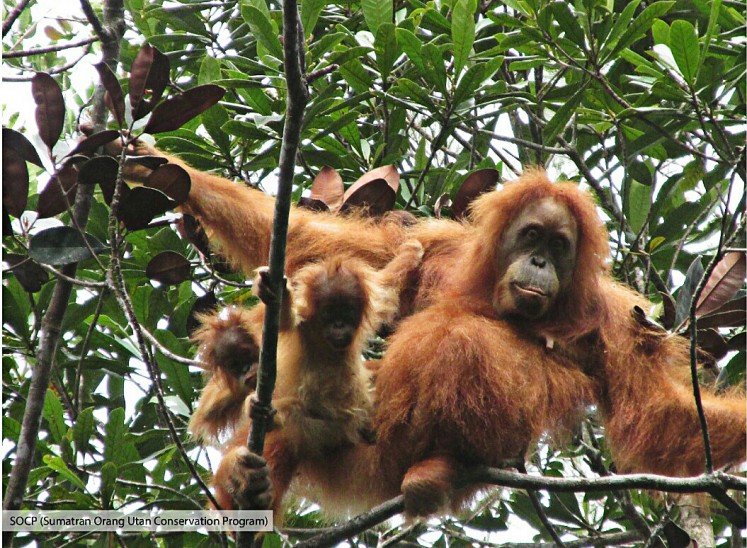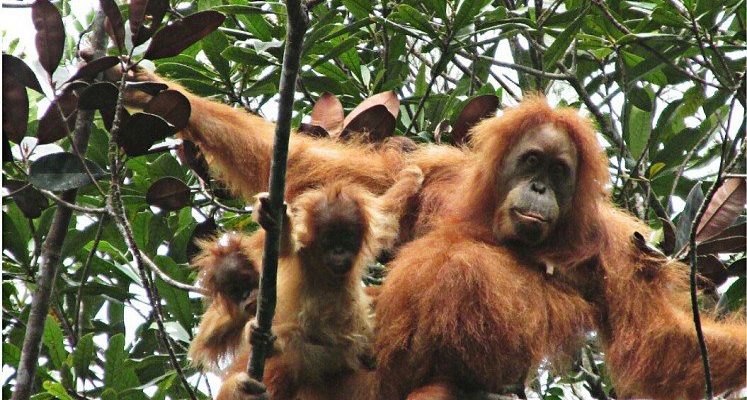
Tapanuli orangutans are unique not just because they are a different species, but also due to their incredible parenting skills. Each mother has her own style, shaped by her environment and experiences. As remote as their habitat may seem, it’s rich in lessons on how affectionate care and learning play critical roles in the lives of these gentle giants. In this article, we’ll explore the various ways Tapanuli orangutans raise their young, providing insights into their nurturing behaviors and the challenges they face.
The Role of Motherhood in Tapanuli Orangutans
Motherhood is at the heart of the Tapanuli orangutan experience. Female orangutans are known for their strong maternal instinct, often dedicating significant portions of their lives to caring for one or two offspring. Unlike many other animals, these moms don’t just have a quick parenting phase. They invest a solid six to eight years in raising their young. That’s about the time it takes for a baby to learn the essential skills they’ll need to thrive in the wild.
This lengthy nurturing period allows the mother to teach her offspring everything from foraging methods to social skills. In the jungle, it’s not just about finding food; young orangutans must learn how to spot ripe fruits, avoid predators, and even communicate with other orangutans. It’s like they’re enrolled in a wildlife academy, with mom as the dedicated teacher.
What’s particularly striking is how mothers create a safe environment for their young. They often build cozy nests high up in the trees, using leaves and branches for comfort. These nests are essential, providing not only a cozy sleeping spot but also a vantage point from which to observe the surrounding forest, ensuring the little ones stay out of harm’s way.
Communication Between Mother and Baby
You might think that orangutans just grunt or make sounds to communicate, but there’s so much more to it. The bond between a Tapanuli orangutan mother and her baby relies heavily on vocalizations and gestures. From the moment a baby is born, it starts to learn the nuances of its mother’s calls and body language.
Vocal communication is crucial. Mothers use soft calls to keep their babies close, especially when they’re exploring the treetops. These vocal cues serve as comforting signals that reassure the baby of their mother’s presence. In contrast, sharper calls can signal danger, teaching the young ones to be alert in their environment.
Interestingly, studies have shown that orangutan mothers will modify their calls depending on the age of their offspring. For instance, younger babies tend to hear softer, more comforting sounds, while older ones might hear louder, more commanding calls. This dynamic not only strengthens their relationship but also equips the young ones with survival skills.
Learning Through Observation
One of the most fascinating aspects of how Tapanuli orangutans raise their young is through observation. Young orangutans are natural learners, soaking up information by watching their mothers and other adults in their community. This behavior is sometimes likened to how human toddlers mimic their parents. It’s a vital part of their development.
When mothers forage for food, their babies are right there, learning how to pick the best fruits or find hidden termites. You might see a mother delicately cracking open a hard-shelled fruit, and her baby will watch intently, learning each movement. This process is crucial because it prepares young orangutans for independence as they grow older.
Additionally, social interactions play a big role in learning. Young orangutans often engage with other young ones, practicing the social skills they observe from their mothers. These interactions help them learn about friendships, play, and conflict resolution, key ingredients for building relationships in adulthood.
Challenges Faced in Parenting
Raising young in the wild isn’t easy, and Tapanuli orangutan mothers face several challenges. One pressing issue is habitat loss. As human activities encroach on their rainforests, these orangutans find it harder to locate food and safe nesting areas. This directly impacts their ability to care for their young.
In addition, the presence of poachers and illegal logging can create dangerous situations. Mothers must remain vigilant and adapt quickly to changes in their environment to keep their babies safe. It’s not just a matter of having the right skills; it’s also about navigating a world that’s increasingly hostile.
Another challenge is the social structure. While orangutans are generally solitary, mothers need to find a balance between teaching their young and ensuring they remain hidden from threats. This means that they sometimes have to move frequently, which can be taxing and disorienting for young ones.
The Importance of Community Support
While Tapanuli orangutan mothers primarily raise their young alone, community support can’t be overlooked. In the wild, these orangutans occasionally come together. You might find a mother sharing fruits with another or letting their youngsters play together. This interaction provides a broader safety net for each female, creating a unique communal dynamic.
Community support plays a role in teaching too. A young orangutan can learn skills from observing not just its mother, but also other adult orangutans in the area. They might catch on to new foraging techniques or social nuances by interacting with different individuals, enriching their learning experience.
Such communal interactions foster a sense of belonging. Young orangutans who grow up observing and interacting with a small group tend to develop better social skills. This kind of environment helps prepare them for a life that will eventually require them to interact with other orangutans.
Conservation Efforts for Tapanuli Orangutans
With all the challenges these incredible creatures face, conservation efforts are more vital than ever. Organizations are working tirelessly to preserve the Tapanuli orangutans’ natural habitat, ensuring that these remarkable mothers can continue to raise their young without the looming threat of deforestation or poaching.
Habitat restoration projects are underway, focusing on replanting native trees and creating protected areas. This not only helps orangutans but also supports the entire ecosystem. These efforts aim to ensure that the next generation of Tapanuli orangutans can thrive and, in turn, pass on their knowledge to their young.
You might be wondering how you can help. Supporting conservation organizations, spreading awareness, or even adopting an orangutan through wildlife programs can make a difference. Every bit counts, and collective action can lead to tangible change.
In the wild, Tapanuli orangutans face a delicate balancing act of nurturing their young amidst challenges and changing environments. Their ability to bond, teach, and adapt is a testament to the strength of maternal instincts in the animal kingdom. As these gentle giants continue to raise their young, the lessons they impart are not just vital for their survival but also a reminder for us about the importance of empathy, community, and perseverance.
By understanding and supporting their journey, we can help ensure that the rich tapestry of life in the rainforests of Sumatra continues, allowing future generations of Tapanuli orangutans to thrive and share their unique stories with the world.

